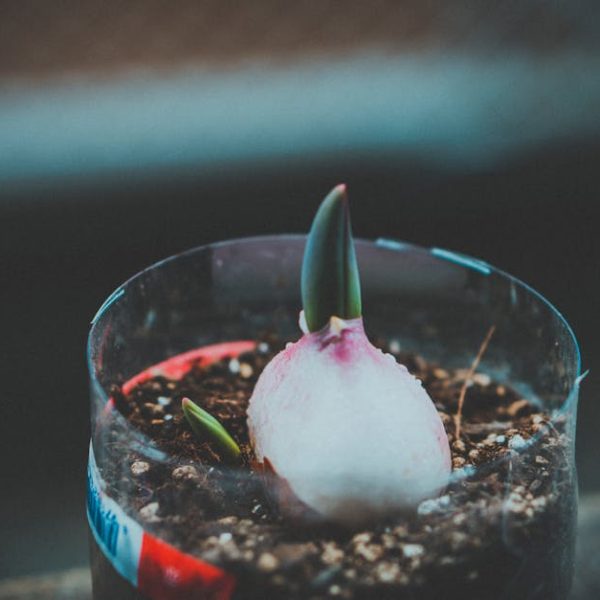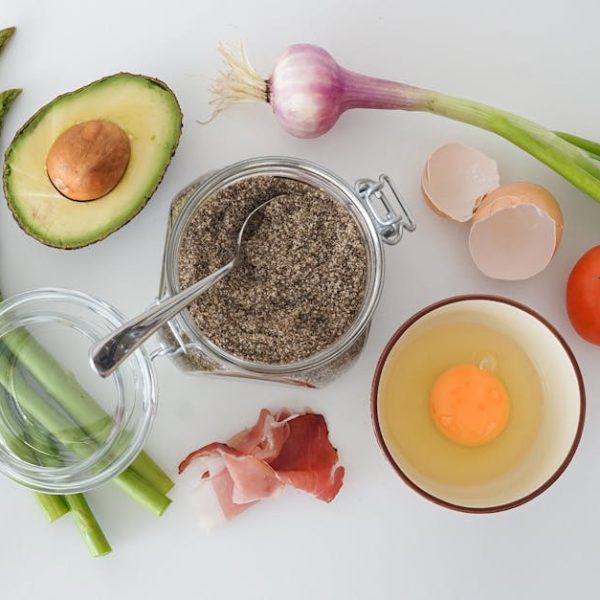Using the Refrigeration Technique
Ready for a quick food hack that makes all the difference to your asparagus’ shelf life? Enter the clever use of refrigeration. It’s a simple and effective approach that serves up extended freshness for those verdant stalks. All you need is an elastic band, a reusable plastic bag, and minimal fridge space. Here’s the winning formula:
- Rinse the asparagus under cold water gently.
- Pat them dry with a paper towel or kitchen cloth.
- Gather all the asparagus together, making sure the cut ends align.
- Roll them up in a damp paper towel or kitchen cloth.
- Finally, wrap the bundle in a reusable plastic bag leaving one end open for air circulation.
Pro tip : The veggie drawer features a controllable humidity level that’s ideal for your bundle of asparagus, ensuring prolonged freshness.
Preserving Asparagus with the Water-and-Jar Method
This approach lets you add a bit of aesthetic appeal to your kitchen while keeping your asparagus in prime condition. Using a jar or vase with water creates a hospitable environment for your asparagus, akin to fresh flowers.
Just follow these steps:
- Trim an inch off the bottom stalks.
- Fill a glass jar or vase with about 1 inch of cool water.
- Stand the asparagus up in the jar, much like a bouquet of flowers.
- Store in the fridge if you plan on using it within 2-3 days or let it set in a cool, dark corner of your kitchen.
Pro tip : This method works best with perfectly firm and hydrated asparagus, so be sure to select stalks that exhibit these qualities for optimal results.
Freezing Asparagus for Long-term Storage
Hate wasting food but won’t get through that bunch of asparagus in time? Fear not—the freezing method comes to the rescue, offering a practical solution for long-term storage while preserving that fresh crunch.
Follow these steps for freezing success:
- Rinse the asparagus and remove tough woody ends.
- Cut the stalks into 2-inch pieces or leave them whole, according to your preference.
- Blanch them in boiling water for 2-3 minutes then quickly cool in an ice bath.
- Drain and pat dry gently with a clean towel.
- Arrange in a single layer on a baking sheet and freeze individually.
- Once frozen, transfer to a sealed airtight bag or container.
Pro tip : Ensure your freezer is at its coldest setting and avoid over-stuffing it, this can cause freeze burns which impact the quality of asparagus stored in the long run.
After mastering these useful techniques, it’s crucial to remember the essentiality of incorporating asparagus into your diet. This brings us to the nutritional values and health benefits of asparagus.
Nutritional Benefits of Eating Fresh Asparagus
Asparagus is more than just a gastronomic delight—it’s a nutritional powerhouse packed with fiber, folate, vitamins A, C, E, and K, and microelements like iron and copper. Incorporating this bright-green veggie into your meals can promote a healthy lifestyle, improve digestive health, and provide anti-oxidative and anti-inflammatory benefits.
Pro tip : Keep an eye out for bright green or violet-tinged asparagus with firm stalks and compact tips when shopping. Seek out asparagus with moist root ends as this indicates freshness.
With these proven tips and techniques, your asparagus is set to stay fresh and nutritious longer, ready to help you whip up your favorite meals. Just remember – treating asparagus right, before they hit the pan, pays off big in freshness, flavor and nutrition!
Fresh Asparagus and the Paper Towel Method
The paper towel method is yet another brilliant way of keeping your asparagus fresh. It works based on the principle of maintaining the moisture content of the asparagus, which is critical for their freshness. The whole process is easy to implement, low-cost, and surprisingly effective. Here is how you do it:
- Begin by rinsing your asparagus under cold water very gently to remove any dirt.
- Gently pat your asparagus dry with a soft cloth or paper towel.
- Wrap your asparagus in a damp (not wet) paper towel to help maintain the vegetable’s moisture content.
- Store the asparagus in the crisping drawer of your refrigerator.
Pro tip : Choose thicker asparagus for this method as they hold up better to the damp paper towel without becoming mushy.
Nutritional Benefits of Eating Fresh Asparagus
Fresh asparagus is an excellent addition to any diet. These slender green stalks pack a nutritional punch, with high levels of fiber, folate, and vitamins A, C, E, and K. They’re also a rich source of glutathione, a potent antioxidant known for its detoxifying properties. Here are some of the health benefits of consuming fresh asparagus:
- Boosts digestive health: Asparagus is high in fiber, promoting a healthy gut and preventing constipation.
- Full of antioxidants: These compounds help protect your cells from harmful free radicals and support a healthy immune system.
- Heart health: The B vitamins in asparagus can help regulate homocysteine levels, a substance that can be harmful to blood vessels.
Remember, the fresher the asparagus, the more nutrients it contains. So, it’s crucial to store them properly to take full advantage of their nutritional benefits and versatility in your meals.
Pro tip : Combine asparagus with a healthy fat like olive oil during cooking. It enhances the absorption of fat-soluble vitamins present in asparagus, maximizing their health benefits.
As you can see, keeping asparagus fresh and crispy is not as hard as it may seem. With the tips and methods above, you’ll be a pro in no time, ensuring your asparagus remains tasty, nutritious, and ready for your culinary experiments. Happy cooking!
Key Takeaway:
- Refrigeration is an effective method for storing asparagus, extending shelf life and maintaining freshness.
- The water-and-jar method, akin to storing fresh flowers, can help keep asparagus fresh while adding aesthetic appeal to your kitchen.
- Freezing asparagus is ideal for long-term storage, preserving freshness for whenever needed.
- The paper towel method effectively maintains the moisture content of asparagus, critical for their freshness.
- Fresh asparagus’ multitude of nutritional benefits can be optimized through proper storage.
Asparagus is not only delicious but also packed with essential nutrients. By using these simple and clever tips, you can ensure your asparagus stays fresh and nutritious for your meals. Remember, the key to maintaining asparagus’s freshness and nutritional benefits lies in correct storage.
FAQs
Q: Can I store asparagus outside the refrigerator?
A: Yes, you can store asparagus outside the refrigerator using the water-and-jar method. It’s even more effective when kept in a cool, dark corner.
Q: How long can I store asparagus in the refrigerator using the paper towel method?
A: When correctly applied, the paper towel method can keep asparagus fresh in the refrigerator for about a week.
Q: Does freezing asparagus affect its nutritional value?
A: No, freezing asparagus properly does not affect its nutritional value significantly. However, it’s important to consume it within 6-8 months for the best taste and nutritional benefits.
Q: What characteristics should I look for when buying asparagus for the water-and-jar method?
A: For the water-and-jar method, select asparagus that is perfectly firm and hydrated for optimal results.
Q: Is moist root end a good indicator of fresh asparagus?
A: Yes, when shopping, seek out asparagus with moist root ends as it indicates freshness.
Remember, sharing is caring. If you found this article insightful, please share it with friends and family. Check out other captivating posts on our website to broaden your knowledge on various topics.






